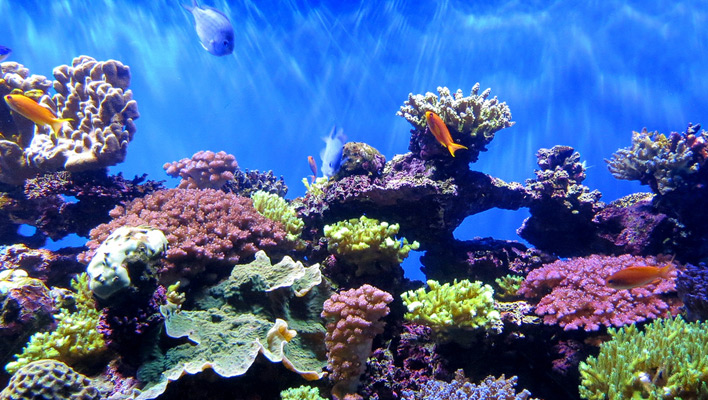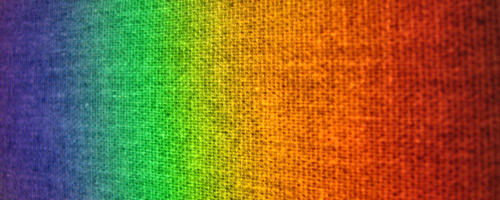Saltwater aquarists who choose to take the plunge into reef keeping quickly come to an interesting realization: The lighting used in such systems is of paramount importance. Whereas lighting in fish-only systems is primarily an aesthetic concern (for the most part, as long as the lights show off the fish to their best advantage, you’re good to go), it’s actually a matter of life or death for many reef invertebrates.
It’s all about algae
Why is lighting so important in reef systems? Many of the corals, anemones, clams, and other sessile reef invertebrates we keep in reef systems have symbiotic algae, called zooxanthellae, residing in their tissues. Through the process of photosynthesis, the zooxanthellae utilize sunlight to produce nutrients, which they share with their hosts, providing much of the food these invertebrates need to survive. This remarkable adaptation allows invertebrates to thrive in the typically nutrient-poor waters surrounding coral reefs.
When these invertebrates are kept in aquarium systems, lighting of the appropriate quality and intensity must be provided or the zooxanthellae will die, followed soon thereafter by the invertebrate host. In other words, those normal-output fluorescent tubes that came preinstalled in your aquarium hood just aren’t going to cut it for most light-hungry inverts.
Requirements vary
Beware of any sweeping generalizations about the lighting requirements of different groups of corals or other invertebrates, and don’t assume the more wattage, the merrier. Invertebrates’ needs with respect to lighting can vary dramatically and are influenced by several factors related to their natural environment, such as:
- The depth at which they occur
- The turbidity of the water
- The presence of overhanging reef structure or overshadowing invertebrates
Thus, for example, an Acropora species coral adapted to life in shallow water on the reef crest would require much more intense illumination than, say, a colony of mushroom polyps adapted to the light level under a rocky ledge in deep water. It’s essential to decide which invertebrate species you’d like to keep and then select lighting that’s appropriate to those species. Don’t buy the lights first or you’ll paint yourself into the proverbial corner when it comes to your livestock options.
What is Kelvin temperature?
When shopping for reef lighting, you’ll notice that each bulb or tube is assigned a number followed by the letter K. This refers to the lamp’s Kelvin temperature rating, or color temperature, which tells you the portion of the spectrum it emits. In overly simplified terms, the lower the Kelvin rating, the more red the light is, and the higher the Kelvin rating, the bluer it is. Corals and other photosynthetic reef organism tend to benefit from the bluer portion of the spectrum.
Lamps sold for reef-aquarium lighting typically fall somewhere between 6500K and 20000K—ranging in appearance from sunny yellow to very blue (with considerable variation among different brands).
Lighting types
A dizzying array of light sources are used to illuminate reef tanks, including metal halide bulbs, LEDs, high-output T5 fluorescents, VHO (very-high-output) T8 fluorescents, and power compact fluorescents. You’ll also come across fixtures that include various combinations of these lamp types.
The most popular reef-lighting sources nowadays are metal halides, T5s, and LEDs, so let’s take a look at some of the pros and cons of each:
Metal halide
Pros
- Provides very intense light in a relatively small package
- Penetrates deep in water column
- A point source of light that produces aesthetically pleasing glimmer lines
Cons
- Produces a lot of heat and consumes a lot of energy
- Ongoing cost of replacement bulbs is relatively high
T5 HO fluorescent
Pros
- Lower energy consumption compared to metal halides
- Runs much cooler than metal halides
- Relatively low initial cost
Cons
- Cost of replacement tubes can add up significantly
- A diffuse light source that does not produce glimmer lines
- Doesn’t penetrate as deep in the water column as metal halide or LED
LED (light-emitting diode)
Pros
- Penetrates deep in water column
- Low energy consumption and heat production
- Potentially very long functional lifespan
- Produces pleasing glimmer lines
- Very programmable for different lighting schemes
Cons
- High initial purchase price
- Still a relatively new and evolving technology
Beware the unbelievable bargain!
When shopping for any of these lighting types or fixtures that combine the different technologies, be wary of prices or performance claims that seem too good to be true. Some lighting products on the market that claim to be reef-quality really aren’t suitable for sustaining photosynthetic invertebrates. Remember, lighting is among the most critical elements in a reef system—not a place to cut corners.




